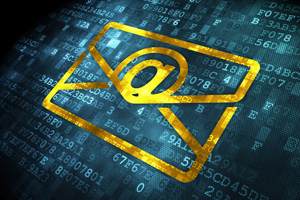
Get your FREE 30-day trial.
Please complete all fields.
 After years of believing that having a robust A/B testing program was the hallmark of a great email marketing program, I now have a new litmus test:
After years of believing that having a robust A/B testing program was the hallmark of a great email marketing program, I now have a new litmus test:
Does the majority of your email marketing revenue and engagement come from triggered emails?
Anecdotally, marketers generally hit this mile-marker when more than 5% of their email volume is triggered emails. As a rough indication of where we’re at as an industry, Salesforce announced at Connections in September that over the past year our Marketing Cloud clients had sent 237 billion emails, with 8.5 billion — or 3.5% — of those being triggered. Extrapolating from there, marketers would need to increase their triggered email volume on average by more than 40% relative to their broadcast email volume in order to hit this benchmark. They would also likely need to increase the sophistication of their existing triggered programs along the way.
A brand’s reliance on triggered emails is a valuable benchmark for four reasons:
1. Triggered emails are among the most relevant, highest ROI emails a marketer can send. Because triggered emails are sent in response to subscriber actions or requests, they arrive at a time when subscribers are highly likely to respond to the message. According to our 2015 State of Marketing report, triggered emails earn high marks for effectiveness.
2. Triggered emails represent a competitive advantage. It takes time to set up triggered emails—and even more time to optimize them. So getting these programs up and running before your competitors creates separation that’s difficult for them to close quickly.
3. Triggered emails are great customer service. “I want customer service so good it’s marketing, and marketing so good it’s customer service.” Salesforce Marketing Cloud CEO Scott McCorkle said this at Connections and it has been stuck in my head ever since. The second half of that statement is all about analytics, segmentation, personalization, dynamic content, predictive intelligence, preference centers, progressive profiling, and—yes—triggered emails.
4. Triggered emails cater to your best customers. Because your best subscribers are the ones clicking through, browsing, abandoning carts, and engaging in other high-value activities that trigger these emails, they will receive the vast majority of triggered messages. That’s why triggered emails are a key element of super-engagement, which aims to increase the opportunities presented by engaged subscribers.
For the full discussion, check out the entire column on MediaPost.com.